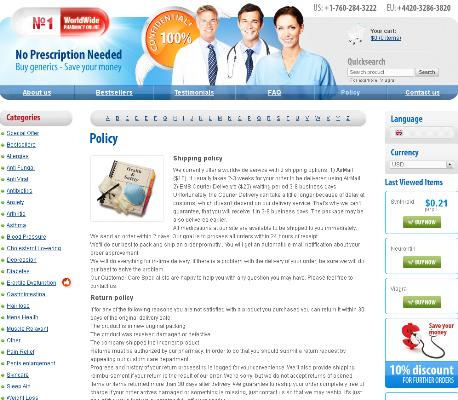Prevacid: A Treatment Of Esophagus And Stomach Problems
Prevacid is in a family of drugs called PPIs (Proton Pump Inhibitors). Apart from lansoprazole, Prevacid's other active ingredient is naproxen. The inactive ingredients include colloidal silicon dioxide, hydroxypropyl cellulose, magnesium carbonate, sucrose, titanium dioxide, polysorbate 80, polyethylene glycol, methyl acid copolymer, sugar sphere, talc and starch. Prevacid is available in 15 mg and 30mg tablets. Prevacid FASTAB 30mg tab, a faster acting tablet is also available. The 30 mg is the most frequently recommended than the other two. The 15 mg tablet should be used by children aged 12 years and below while the Prevacid FASTAB 30 mg tablet is prescribed to rescue drug interaction.
How Does It Work? Prevacid has two active ingredients, lansoprazole and naproxen. Naproxen is an anti steroidal anti-inflammatory drug which blocks the enzyme that is responsible for the synthesis of prostaglandin hence helping to reduce inflammation (swelling and pain) some of the known benefits of naproxen include reduction of swelling in joints, night stiffness, pain at rest and morning stiffness. On the other hand, lansoprazole works by inhibiting gastric acid secretion. The combined effect of these two drugs and antibiotics treats numerous types of ulcers.
Dosage And Directions: In case a patient is taking iron, ampicilin, itraconazole, theophylline, cilostazol, digoxin, vorconizole, warfin or ketoconazole it may be necessary for additional monitoring of your intake by a doctor. Under instructions from a physician, Prevacid should be taken in the morning before eating. It is recommended the tablet be swallowed whole to prevent aggravating the side effects. To maximize Prevacid's effects, you should take it the same time each day.
Prevacid Uses: - Treatment of active duodenal ulcers in the short term - Prevacid is also indicated for short-term symptom relief and treatment of active duodenal ulcers. - Eradication of H. PYLORI to prevent the recurrence of duodenal ulcers - when combined with clarithromycin and amoxillin, Prevacid can be used to treat duodenal ulcer's patients with the H. PYLORI infection which have more than 12-month history with the disease. It has been proven that the elimination of H.PYLORI reduces the risk of recurrence of ulcer by 50% - Maintenance of healed ulcers in the duodenum - Prevacid is known to maintain the healing of ulcers in the duodenum for short periods up to 10 weeks. - Healing of gastric ulcers associated with NSAID - Prevacid is recommended for the treatment of gastric ulcers associated with the use of NSAID for patients reliant on these rugs. - Treatment of GERD (Gastroeosphageal Reflux Disease) - Prevacid helps heal heart burns, erosive esophagitis and other symptoms associated with acid reflux.
Drug Interactions: Prevacid has no known serious drug interactions. However, the absorption of certain drugs in the stomach may depend on acidity. Prevacid and other drugs that work by reducing the acid levels in the stomach may also reduce absorption drugs like ketoconazole and increase the blood concentration of digoxin. This can reduce the effectiveness of Nizoral (ketoconazole) and increase the toxicity of digoxin.
Side Effects: Headaches, abdominal pain and diarrhea may occur after taking prevacid. However, these should be just mild symptoms. In case they persist, inform your doctor immediately. Prevacid is normally prescribed by doctors after a careful analysis of the possible occurrence of these side effects. For this reason, it is very are for someone to experience serious Prevacid side effects. There are no known serious allergic reactions to Prevacid use. However, swelling, itching, rash, and severe dizziness should be reported to the doctor, in case they occur.

